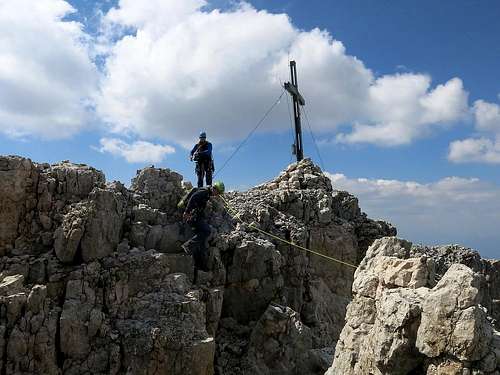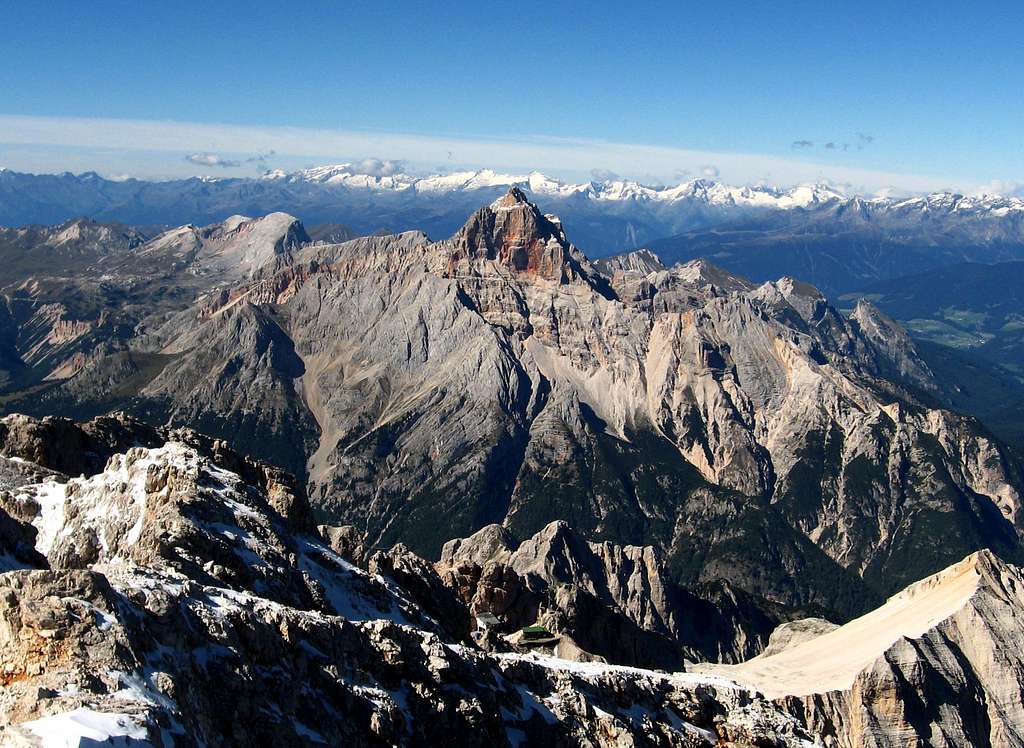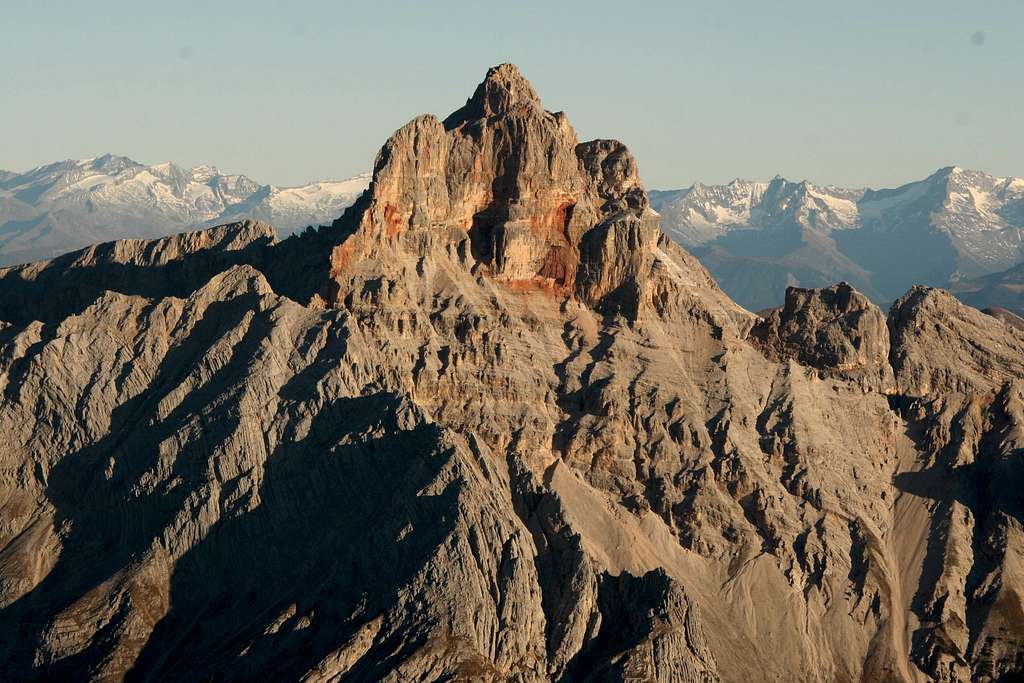-
 12855 Hits
12855 Hits
-
 91.97% Score
91.97% Score
-
 37 Votes
37 Votes
|
|
Mountain/Rock |
|---|---|
|
|
46.63411°N / 12.14436°E |
|
|
Alto Adige |
|
|
Mountaineering |
|
|
Summer |
|
|
10322 ft / 3146 m |
|
|
Overview
Geographical classification: Eastern Alps > Dolomites > Prags - Braies Dolomites > Croda Rossa d'Ampezzo
Croda Rossa d'Ampezzo 3146 m
What's New on this Page?
* Jul 28, 2017 - Ownership switched by andrea
* Dec 5, 2019 - Overhaul of the page
"Croda Rossa d'Ampezzo" - in German Hohe Gaisl, in ladin dyalect Croda Rósa or Crep Checio - is a 3146 m high mountain which lies between the Val di Braies and the Val di Landro, on the border between Bolzano province and Belluno province (Veneto) within the "Parco Naturale delle Dolomiti d'Ampezzo". Croda Rossa d'Ampezzo is also known to be a very rugged mountain, with crumbly rock and difficult to climb. It's definitely the wildest summit amongst all the 3000 meters peaks in the Dolomites. Not to be confused with the nearby "Croda Rossa di Sesto", it stands as an imposing and isolated summit amongst lower and inconspicuous mountains. Its main feature is to have the walls colored of deep red color unique in the Dolomites. This characteristic gives the mountain a bloody appearance when seen from far. If you approach it and climb on its slopes, the color red takes shades of yellow, orange and sometimes purple.

History
The first attempt to climb was undertaken in 1865 by Paul Grohmann with the guide Angelo Dimai and the hunter Fulgenzio Dimai along the north-west wall, but unfortunately it failed a few steps from the summit. The team stopped the ascent on the Northern fore-summit of the mountain. The summit was then climbed in the year 1870; the first summiters were the climber "Whitewell" and the local guides "Siorpaes" and "Laneuer" up the West gully in 1870, June 20th.Getting there
The Braies group is located between the regions Veneto and Alto Adige. Usually most of the routes start from the locality "Prato Piazza" 1991m. Easily reached by car and bus services from the village of "Villabassa" 1159 m along the main "Val Pusteria". From the motorway A22 that connect Austria to Italy across the "Passo del Brennero", take the gate "Brunico/Brunek", follow the indication to "Val Pusteria/Dobbiaco", and than shortly to "Villabassa". From Austria (east) Take the motorway A12 to exit "Kufstein". There turn onto 178, later 161 south in direction "Kitzbühel". At Mittersill 161 turns into 108 which heads through Felbertauern Tunnel. Take 108 until "Lienz" were you turn right (west) onto E66 which on the border crossing turns into SS49 to Toblach/Dobbiaco and Bruneck/Brunico.Secondary peaks
Secondary summits of the massif are also:Via Grohmann (Normal Route)

Via Innerkofler
Via InnerkoflerOther important routes
- West couloir - E.Whitwell/C.Lauener/S.Siorpaes - 610m III/IV
Red Tape
No fees no permits required. The whole group is included among the nine ones acknowledged as an UNESCO World Heritage Site in 2009. More info about Dolomiti Unesco World Heritage here:- on SP in the article by Silvia Mazzani: Dolomites living mountains
- on the Unesco Official web-site: Unesco
- on the Fondazione Dolomiti Unesco web-site: Fondazione Dolomiti Unesco
When to climb
From June to SeptemberWhere to stay
The main point of support for the ascent to Croda Rossa d'Ampezzo was the Bivouac "Helbig-Dall'Oglio" (nine places) standing in a panoramic position 2,253 meters above the threshold of the solitary valley Montejèla, in the group of Croda Rossa d'Ampezzo, founded in 1964 by the Fondazione Antonio Berti, with the logistical and financial help of Marino Dall'Oglio, academic of Cai and a great connoisseur of the Croda Rossa d'Ampezzo, who dedicated the structure to the deceased consort Pia Helbig and donated it to the section CAI Cortina. In 2013 the CAI section of Cortina d'Ampezzo, owner of the bivouac, demolished the structure. The main points of support are the refuges Malga Ra Stua and Rif. Pratopiazza.
Meteo
ARPA Dolomiti MeteoGuidebooks and maps









